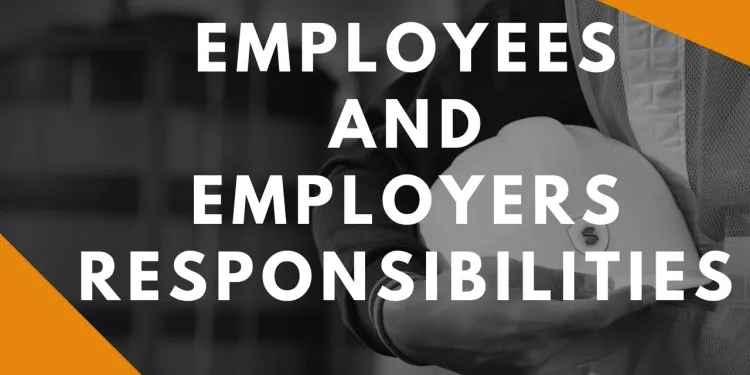
Find Help
More Items From Ergsy search
-

Is it safe to exercise with a cold?
Relevance: 100%
-

How can I ensure safety during pregnancy exercises?
Relevance: 76%
-

Can cold weather cause a cold?
Relevance: 68%
-

Is there a way to cure a cold quickly?
Relevance: 65%
-

How to Treat a Common Cold
Relevance: 63%
-

Is there a cure for cold sores?
Relevance: 62%
-

Is it safe to take cold showers during a heatwave?
Relevance: 60%
-

How to treat a cold | NHS
Relevance: 59%
-

How can I prevent cold sores?
Relevance: 58%
-

What are Cold Sores?
Relevance: 58%
-

Is it okay to use ice packs or cold showers to cool down?
Relevance: 58%
-

Are cold sores contagious?
Relevance: 58%
-

What triggers a cold sore outbreak?
Relevance: 58%
-

How long do cold sores last?
Relevance: 58%
-

Can children take the same cold medications as adults?
Relevance: 58%
-

Plantar Fascia Cold Therapy
Relevance: 57%
-

What causes cold sores?
Relevance: 56%
-

What are the symptoms of a cold sore?
Relevance: 56%
-

What are the common symptoms of a cold?
Relevance: 56%
-

Should I see a doctor for a cold?
Relevance: 55%
-

How can I treat a cold at home?
Relevance: 55%
-

Can I take antibiotics for a cold?
Relevance: 55%
-

How are cold sores transmitted?
Relevance: 55%
-

Can I use a humidifier to help with my cold symptoms?
Relevance: 54%
-

Health and safety responsibilities
Relevance: 54%
-

Is Vitamin C effective against colds?
Relevance: 53%
-

Can exercise trigger asthma symptoms?
Relevance: 53%
-

Exercise in patients with a neuropathy
Relevance: 53%
-

How long does a common cold typically last?
Relevance: 52%
-

Plantar Fascia Loading Exercise (High Load Exercise)
Relevance: 52%
-

What should you do if you have a cough or cold?
Relevance: 52%
-

Honey 'as good as antiviral creams' for cold sores | NHS Behind the Headlines
Relevance: 50%
-

What are some safety programs specifically for seniors?
Relevance: 49%
-

Can I do abdominal exercises during pregnancy?
Relevance: 49%
-

What exercises can I do during pregnancy?
Relevance: 48%
-

Fire Safety At Home
Relevance: 48%
-

Can I do high-impact exercises while pregnant?
Relevance: 48%
-

How do I treat my child's cold? (9 - 30 months) | NHS
Relevance: 48%
-

Neck Exercises
Relevance: 48%
-

Neck Exercises
Relevance: 48%
Is it Safe to Exercise with a Cold?
Exercising when you have a cold can be a bit of a dilemma. On one hand, you want to maintain your fitness routine, but on the other, you don’t want to exacerbate your symptoms or prolong your recovery. It’s crucial to understand when it is safe to continue with your workout and when you should give your body a break.
Understanding the “Neck Rule”
A commonly recommended guideline for deciding whether to exercise with a cold is the “neck rule.” If your symptoms are above the neck, such as a runny nose, nasal congestion, or a mild sore throat, moderate exercise is generally considered safe. However, if you are experiencing symptoms below the neck, like chest congestion, a hacking cough, or an upset stomach, it is advisable to rest and recover fully before engaging in physical activities.
Benefits of Light Exercise
Engaging in light to moderate exercise, such as walking or yoga, can be beneficial if your symptoms are mild and you feel up to it. Exercise can sometimes help open nasal passages and temporarily relieve nasal congestion. Furthermore, light activity can have mood-boosting effects, which might lift your spirits when you’re feeling under the weather. It’s vital, however, to listen to your body and not push yourself too hard.
When to Avoid Exercise
If you have a fever, fatigue, or widespread muscle aches, it’s best to avoid exercising. These symptoms indicate your body is fighting an infection, and overexertion could lead to more severe illness or prolong your recovery. Giving your body the rest it needs can be more beneficial in the long term, allowing you to return to your workouts sooner and at your full capacity.
Hydration and Hygiene
While exercising with a cold, ensure that you stay hydrated, as your body loses fluids when you’re sick. Drink plenty of water before, during, and after your workout. Additionally, maintain good hygiene by wiping down equipment after use and washing your hands frequently to prevent spreading germs to others, especially if you’re at the gym.
Consulting Your Healthcare Provider
If you’re unsure whether it’s safe to exercise with your cold symptoms, it’s always a good idea to consult with a healthcare professional. They can provide personalized advice based on your specific condition and health history.
In summary, light exercise might be safe with a mild cold involving above-the-neck symptoms, but rest is preferable with more severe symptoms or when you’re feeling unwell overall. Prioritizing your health and recovery should always be the primary focus.
Is it Safe to Exercise with a Cold?
When you have a cold, you might wonder if you should still exercise. You want to stay fit, but you also don't want to make your cold worse. It's important to know when it's okay to exercise and when you should rest.
Understanding the "Neck Rule"
The "neck rule" can help you decide. If your symptoms are above the neck, like a runny nose or sore throat, you can do light exercise. But if you have symptoms below the neck, like a bad cough or upset stomach, it's better to rest.
Benefits of Light Exercise
Doing light exercise, like walking or yoga, can be good if your cold is mild. It can help clear your nose and make you feel happier. But remember, don't push yourself too hard. Listen to your body.
When to Avoid Exercise
If you have a fever or feel very tired, do not exercise. Your body needs to fight the cold. Resting will help you get better faster.
Hydration and Hygiene
If you do exercise, drink lots of water. Wash your hands often and clean any gym equipment you use. This stops germs from spreading to others.
Consulting Your Healthcare Provider
If you're not sure if you should exercise, ask a doctor. They can give you advice for your specific situation.
To sum up, light exercise is okay if you have mild symptoms above the neck. But rest if you feel very sick or have symptoms below the neck. Always think about your health first.
Frequently Asked Questions
Is it safe to exercise when I have a cold?
If your symptoms are mild and above the neck, such as a runny nose or sore throat, it is generally safe to do light exercise. However, if you have symptoms like fever, fatigue, or chest congestion, it's best to rest.
What types of exercise are safe with a cold?
Gentle activities such as walking, stretching, or yoga are usually safe if your symptoms are mild. Avoid high-intensity workouts that could exacerbate your symptoms.
Should I avoid the gym if I have a cold?
Yes, it is considerate to avoid the gym to prevent spreading the virus to others. If you choose to exercise, consider doing it at home.
Is it better to rest or exercise with a cold?
Rest is crucial for recovery. Listen to your body. If you feel fatigued or have a fever, resting is more beneficial than exercising.
Can exercising with a cold make it worse?
Yes, exerting yourself too much while sick can worsen your condition and prolong recovery time, especially if you have more severe symptoms.
When should I stop exercising and see a doctor?
If you experience symptoms like high fever, chest pain, trouble breathing, or if symptoms persist beyond a few days, seek medical advice.
Is it safe to do cardio with a cold?
Mild cardio exercises like walking may be safe if your symptoms are above the neck. Avoid intense cardio sessions until you're fully recovered.
How can I modify my workout routine if I have a cold?
Reduce intensity and duration. Focus on low-impact exercises and ensure you stay hydrated and listen to your body.
What's the 'neck rule' for exercising with a cold?
The 'neck rule' suggests that if symptoms are above the neck (sneezing, sore throat), you can exercise lightly. If symptoms are below the neck (chest congestion, fever), rest is recommended.
Can I do weightlifting if I have a cold?
It's best to avoid heavy lifting as it increases the risk of straining your body and can prolong recovery.
What should I wear while exercising with a cold?
Dress in comfortable, breathable clothing to regulate your body temperature and prevent overheating.
How long should I wait to resume normal exercise after a cold?
Once your symptoms improve and you feel fully recovered, typically a few days after symptoms disappear, you can gradually return to your normal routine.
Are there any exercises I should absolutely avoid with a cold?
Avoid high-intensity workouts, prolonged running, and heavy weightlifting until you are fully recovered.
Can exercise boost my immunity if I have a cold?
Regular exercise can support a healthy immune system, but while you're actually experiencing a cold, focus on rest and recovery instead.
Should I hydrate more when exercising with a cold?
Yes, it's important to stay hydrated when exercising, especially while fighting a cold, to help your body recover.
Can I exercise if I have a cold?
If you have a cold, you might feel tired or sneezy.
It is usually okay to do light exercise, like walking.
If you feel very sick, like having a fever, rest is better.
Talk to an adult or a doctor if you are not sure.
Using tissues and washing hands can help stop germs.
If you just have a runny nose or a sore throat, you can do some light exercise. This is okay. But if you have a fever, feel very tired, or have a heavy chest, you should rest instead.
What exercises are okay when you have a cold?
Here is a simple way to talk about exercise when you have a cold.
1. Walking is good. It is gentle and easy.
2. Stretching is nice. It can help you feel relaxed.
3. Yoga can be gentle too. Take it slow and easy.
Remember, if you feel too tired or have a fever, rest is best.
Ask a grown-up or a doctor if you have questions.
Easy exercises like walking, stretching, or yoga are usually safe if you don't feel very sick. Don't do hard exercises because they might make you feel worse.
Can I go to the gym if I have a cold?
If you have a cold, it might be best to skip the gym.
Listen to your body. Rest if you feel tired.
Drink lots of water. It helps you feel better.
If you sneeze and cough a lot, you can give your cold to others.
You can rest at home and get better soon.
Use tissues, wash your hands, and stay clean.
Yes, it is kind to stay away from the gym. This helps stop the virus from spreading to other people. If you want to exercise, you can do it at home.
Should you rest or do exercise when you have a cold?
When you have a cold, you might wonder if you should rest or move around. Here is some help:
- Rest: Resting can help your body get better. It gives your body a chance to fight the cold.
- Exercise: If you only have a little cold, like a runny nose, gentle exercise might be okay. But don't push too hard.
Here are some tips:
- Listen to your body. If you feel very tired, it might be best to rest.
- Drink lots of water. It helps you feel better.
- If you have a fever, feel sick, or are very tired, it's best to rest.
Some tools that can help:
- Soft music: It can help you relax if you need to rest.
- Gentle stretches: These can help if you choose light exercise.
Remember, it is okay to take it easy when you are sick.
Rest is very important to help you feel better. Make sure to listen to your body. If you are very tired or have a fever, resting will help you more than doing exercise.
Can Exercise Make a Cold Worse?
When you have a cold, you may wonder if exercising will make you feel sicker.
It is usually okay to do gentle exercises like walking if you only have a sore throat or runny nose.
If you have a fever, cough, or feel very tired, it is better to rest.
Listening to your body will help you know what is best. Stay hydrated and get plenty of sleep.
Yes, doing too much when you are sick can make you feel worse and take longer to get better, especially if you feel very bad already.
When should I stop exercising and see a doctor?
You should stop exercising if you feel pain, dizziness, or if you are short of breath.
If these feelings do not go away, tell an adult or a doctor.
You can use a fitness app to track how you feel when you exercise.
If you have signs like a high fever, chest pain, or find it hard to breathe, talk to a doctor. If you still feel sick after a few days, get help from a doctor.
Is it okay to exercise when you have a cold?
When you have a cold, your body needs rest to get better.
If you have a cold, it is important to listen to your body. Here are some tips:
- If you have a sore throat or runny nose, light exercise like walking might be okay.
- If you have a fever or feel very tired, it's best to rest until you feel better.
- Always ask a grown-up or a doctor if you are not sure.
Remember: Your body is working hard to fight the cold, so help it by resting and drinking lots of water.
Doing gentle exercises like walking is okay if you have a cold and your symptoms are only in your head, like a runny nose. Wait until you feel all better before doing any hard exercises.
What can I do differently if I have a cold and want to exercise?
If you have a cold, here are some tips to help you:
- Listen to your body: If you feel too tired, it's okay to rest.
- Do light exercise: Try walking instead of running.
- Stay warm: Keep your body warm with a jacket or blanket.
- Drink water: Make sure you drink lots of water.
- Take breaks: Rest when you feel tired.
If you feel worse, talk to a doctor or an adult for help.
Do less hard and shorter exercises. Try exercises that are gentle on your body. Drink lots of water and pay attention to how your body feels.
What is the 'neck rule' for exercising when you have a cold?
The 'neck rule' is a simple way to know if you can exercise when you are sick. It helps you decide if it's safe to be active or if you should rest.
If your symptoms are above your neck, like a runny nose or sore throat, you can usually do light exercise. But take it easy and listen to your body. If you feel too tired, it's okay to stop.
If your symptoms are below your neck, like a bad cough or fever, it's best to rest until you feel better.
The 'neck rule' helps you make a good choice about exercising when you feel sick.
Here are some tips to help you:
- Ask someone to help you understand the rule.
- Use pictures or drawings to remember when it's safe to exercise.
- Talk to a doctor if you are not sure what to do.
The 'neck rule' is a way to know if you can do exercise when you're not feeling well. If you have symptoms like sneezing or a sore throat (above the neck), you can do some light exercise. But if you have symptoms like chest congestion or a fever (below the neck), it's better to rest.
Can I lift weights if I have a cold?
If you have a cold, lifting weights might not be a good idea. It's important to listen to your body and rest.
Here are some tips:
- Rest and get better first.
- Drink lots of water.
- If you feel too tired or sick, don’t lift weights.
- Talk to a doctor if you're unsure.
Try using picture cards or talking with someone to help you understand better. Remember, staying healthy is most important!
Try not to lift heavy things. It can hurt your body and make it take longer for you to get better.
What should I wear when I exercise and have a cold?
When you are sick with a cold, wear comfortable clothes for exercising. Here are some tips: - **Wear Layers:** Put on a t-shirt and a sweater so you can take off the sweater if you get hot. - **Soft Fabrics:** Choose clothes that feel soft and don’t make you itch. - **Warm Hat:** If it's cold outside, wear a warm hat. - **Comfortable Shoes:** Wear shoes that are good for walking or running. Make sure you stay warm, but not too hot. Remember to drink water. If you feel too sick, it is okay to rest instead of exercise.Wear clothes that are comfy and let your skin breathe. This helps you stay cool and not get too hot.
When can I start my regular exercise again after having a cold?
If you had a cold, wait until you feel better before doing your usual exercise. Here are some tips that might help:
- Rest until your fever and other symptoms are gone.
- Start with easy exercises, like walking.
- Listen to your body. If you feel tired, stop and rest.
- Ask a grown-up or doctor if you are not sure.
When you start to feel better and all your symptoms are gone, you can slowly go back to your normal activities.
What exercises should I not do if I have a cold?
If you have a cold, it's important to rest. Some exercises might make you feel worse.
Here’s what you can do:
- Listen to your body. If you feel too tired, rest.
- If you only have a runny nose, walking might be okay.
- But if you have a fever or feel very tired, skip the exercises.
Remember, drink lots of water and get plenty of sleep to help you feel better.
If you're not sure, ask a grown-up or a doctor for advice.
Don't do very hard exercises, like running for a long time or lifting heavy weights, until you feel all better.
Does exercise help me get better if I have a cold?
When you have a cold, moving your body can be good. Exercise, like walking or stretching, might help you feel better. It can make your body stronger and help you get well.
If you feel very sick, rest is important too. Listen to your body. If you feel okay, gentle exercise is good. If you feel really bad, it is best to rest.
Ask a parent or a doctor if you are not sure what to do. Sometimes a warm drink or some soup can also help you feel better.
Exercising helps keep your body strong. But when you have a cold, it’s better to rest and get better.
Should I drink more water when exercising with a cold?
If you are exercising and have a cold, it's important to drink enough water. Water helps you stay healthy and feel better. Always have a water bottle with you when you exercise.
Here are some tips:
- Drink a little water before you start exercising.
- Take small sips while you exercise.
- Drink more water after you finish exercising.
If you have a cold, rest and listen to your body. If you feel very tired or sick, it's okay to take a break from exercising.
Yes, it's important to drink water when you exercise. This is even more important if you have a cold. Drinking water helps your body get better.
Useful Links
- Ergsy carfully checks the information in the videos we provide here.
- Videos shown by Youtube after a video has completed, have NOT been reviewed by ERGSY.
- To view, click the arrow in centre of video.
- Most of the videos you find here will have subtitles and/or closed captions available.
- You may need to turn these on, and choose your preferred language.
- Go to the video you'd like to watch.
- If closed captions (CC) are available, settings will be visible on the bottom right of the video player.
- To turn on Captions, click settings .
- To turn off Captions, click settings again.
More Items From Ergsy search
-

Is it safe to exercise with a cold?
Relevance: 100%
-

How can I ensure safety during pregnancy exercises?
Relevance: 76%
-

Can cold weather cause a cold?
Relevance: 68%
-

Is there a way to cure a cold quickly?
Relevance: 65%
-

How to Treat a Common Cold
Relevance: 63%
-

Is there a cure for cold sores?
Relevance: 62%
-

Is it safe to take cold showers during a heatwave?
Relevance: 60%
-

How to treat a cold | NHS
Relevance: 59%
-

How can I prevent cold sores?
Relevance: 58%
-

What are Cold Sores?
Relevance: 58%
-

Is it okay to use ice packs or cold showers to cool down?
Relevance: 58%
-

Are cold sores contagious?
Relevance: 58%
-

What triggers a cold sore outbreak?
Relevance: 58%
-

How long do cold sores last?
Relevance: 58%
-

Can children take the same cold medications as adults?
Relevance: 58%
-

Plantar Fascia Cold Therapy
Relevance: 57%
-

What causes cold sores?
Relevance: 56%
-

What are the symptoms of a cold sore?
Relevance: 56%
-

What are the common symptoms of a cold?
Relevance: 56%
-

Should I see a doctor for a cold?
Relevance: 55%
-

How can I treat a cold at home?
Relevance: 55%
-

Can I take antibiotics for a cold?
Relevance: 55%
-

How are cold sores transmitted?
Relevance: 55%
-

Can I use a humidifier to help with my cold symptoms?
Relevance: 54%
-

Health and safety responsibilities
Relevance: 54%
-

Is Vitamin C effective against colds?
Relevance: 53%
-

Can exercise trigger asthma symptoms?
Relevance: 53%
-

Exercise in patients with a neuropathy
Relevance: 53%
-

How long does a common cold typically last?
Relevance: 52%
-

Plantar Fascia Loading Exercise (High Load Exercise)
Relevance: 52%
-

What should you do if you have a cough or cold?
Relevance: 52%
-

Honey 'as good as antiviral creams' for cold sores | NHS Behind the Headlines
Relevance: 50%
-

What are some safety programs specifically for seniors?
Relevance: 49%
-

Can I do abdominal exercises during pregnancy?
Relevance: 49%
-

What exercises can I do during pregnancy?
Relevance: 48%
-

Fire Safety At Home
Relevance: 48%
-

Can I do high-impact exercises while pregnant?
Relevance: 48%
-

How do I treat my child's cold? (9 - 30 months) | NHS
Relevance: 48%
-

Neck Exercises
Relevance: 48%
-

Neck Exercises
Relevance: 48%


